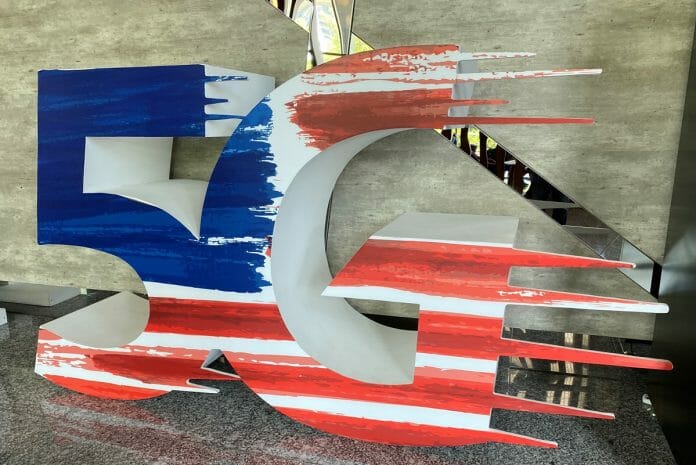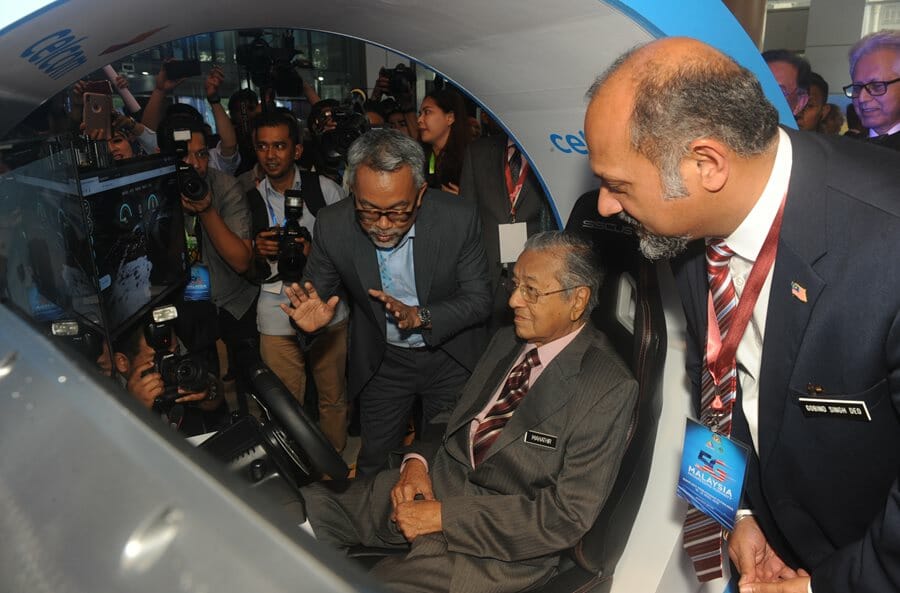It’s the end of the year and I’m still yet to get my 5G service as promised by the Malaysian Government. Recall back in 2019, the then Pakatan-run administration boasted that Malaysian people will be able to enjoy Giga speed connectivity in late 2020, 5G testing stations were launched and a trial for the next evolution of connectivity was underway. So, we are now at the end of 2021 and where are we in terms of the country’s vision for 5G?
Short answer, nowhere! Let’s look at the chronology of events that took place since ex-Communication Minister Gobind Singh Deo helmed the post and the year the nation was looking towards a new horizon of digitalisation and IR4.0. During that period 5G was about to be launched with many telecommunication service providers and hardware vendors showcasing scenarios on how the technology will play out in real use. In January 2020 Langkawi was turned into a 5G bubble, with doctors conducting remote diagnosis and police patrol cars receiving live video feed with no buffering. Malaysians were teased with what was about to arrive.
This was promised to Malaysians at that time by the Malaysia Communication And Multimedia Commission; Malaysia has identified 100 5G use cases with an initial total investment of RM143 million and according to the Malaysian Institute of Economic Research the implementation of 5G would contribute up to RM12.7 billion to the nation’s economy between 2021 and 2025 and would create more than 39,000 new job opportunities.
However, what did arrive was a new government and Covid-19, however it was during this most difficult time in the nation’s history that we realised the important role technology would play in allowing us to continue functioning even when everything else was on lockdown. With 32 million weighing on the infrastructure to connect with loved ones, keep themselves entertained, do their school work, and work from home, Malaysia’s existing network was feeling the weight and eventually collapsed. Perikatan Nasional appointed Communication Minister Dato Saifuddin Abdullah, pulled back the 5G launch to a later date and ordered the telco’s to focus on 4G after discovering that basic even 3G coverage was missing in the rural areas of Peninsula and East Malaysia.
A Big Mistake
This was a big mistake, there was no need to halt the momentum already built on getting 5G of the ground, as the early stage of the technology was focused on enterprise use, health tech, cloud computing, AI, blockchain, security were other innovation that can solve many of the blockages the country is facing in terms progress.
Vendors and telcos were flustered when policymakers changed the direction at a whim, the result was catastrophic with millions lost and innovative discoveries suspended.
Finally, after receiving brickbat from experts and the media (including BusinessToday), MCMC decided to rescind its earlier plans for the Q4 to early 2021 launch of 5G.
During the peak of the pandemic, Tengku Zafrul Minister of Finance under Prime Minister Tan Sri Muhyiddin Yassin announced the relaunch of 5G under a new concept for spectrum allocation not familiar with the operators. The Minister revealed that Malaysian will adopt the Single Wholesale Network format which will be managed by a NewCo under MOF. Needless to say, the announcement left the industry in shock and flustered yet again. What SWN means is that instead of the usual bidding of the spectrum process (which generates revenue for the government) Malaysia decided to manage the spectrum and lease to operators at a fixed price.
MOF soon appointed Ralph Marshall formerly of Maxis Telecommunication to head the NewCo which was later renamed to Digital Nasional Berhad which was tasked to spearhead the RM15 billion project. The mandate was simple and clear- roll out 5G infrastructure nationwide and have all the mobile operators ride on the super broadband highway. This was in February 2021, 5G was coming before year-end!
DNB Woes
On 16 August 2021, PM Tan Sri Muhyiddin resigns, hands over the reign to his deputy Datuk Seri Ismail Sabri, and a new cabinet is formed. New Communication comes on board, hits the ground calling for more transparency on the award of a massive national project to DNB.
Parliament questions on the appointment, Ministers argue among themselves and once again the Rakyat left in the lurch with 5G rollout coming to a slow pace. To date only two telecommunication company’s have signed agreements with DNB, Telekom Malaysia, and YTL Yes, combined these operators only have about 10% of the mobile telephony market. Maxis, Celcom, Digi, and U Mobile have yet issued statements or sign-up packages.
Frustratingly, it’s 2022 and there is no resolution to the impasse yet According to data, damage caused by delay and uncertainty can cause serious setbacks in a nation’s economic progress. Delaying deployment by a year could reduce economic growth by RM12 billion this was published by EY which forecast RM122 billion in the economic contribution by 2030 or 5% of GDP.
The non-stop politicking with personal agenda, could impede companies from making 5G-enabled technology and innovation, Malaysia is losing precious time as nations in the region have already embraced 5% and ecosystems are being developed for the next wave of technological advancement.
The Philipines has already 5G coverage in major cities and boasts of over 1 million users surfing on its network. Meanwhile, Singtel has wired two-thirds of Singapore with ultra-fast 5G speeds covering most of the CBD areas, the nation plans to be fully 5G capable by 2025.
Compared to 1MDB, this is a bigger robbery from the people of Malaysia, depriving the nation of an important growth source that can secure its future is truly a travesty.
So my question to stakeholders and regulators for 2022 would be…Hello, Where is my 5G?










